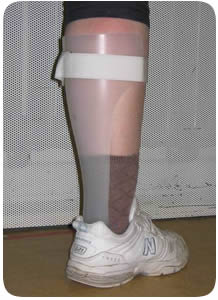Walking is a coordinated movement that propels the body forward. It requires good balance and the ability to move one leg in front of the other. Walking as an activity can be graded from a few steps up to walking in different environments (e.g. outdoors, on uneven surfaces or uphill). Following a stroke, therapists will work on balance, weight transference and leg control as well as the components of walking.
Devices to help with walking
- Walking aids. A variety of walking aids may be used depending on the support that person requires. The device chosen is determined not only on the person’s physical ability but also whether they are safe using it. Some people who have problems with vision, memory, concentration or thinking may be more unsafe with an aid than without. Additionally some walking aids require two hands to control them this may mean that for some people they are not appropriate.
- Splints/braces (sometimes called orthotics). The therapist may also refer for specialist orthotic devices/splints. These can be used to help support or hold the joint in a good position. These can include;
- Knee braces – to provide support to the knee.
- Ankle foot orthosis (AFO) – to help keep the foot up and prevent the toes catching when taking a step forward and ensuring that the foot is in a good position when placed on the ground.
- Shoe wedges or insoles – to prevent the foot turning over when walking.

Ankle foot orthosis (AFO)
- FES. Some people may benefit from Functional Electrical Stimulation or FES. This device uses electrical impulses to stimulate muscle contraction and assist in walking.

Functional Electrical Stimulation or FES uses electrical impulses to stimulate muscle contraction and assist in walking.